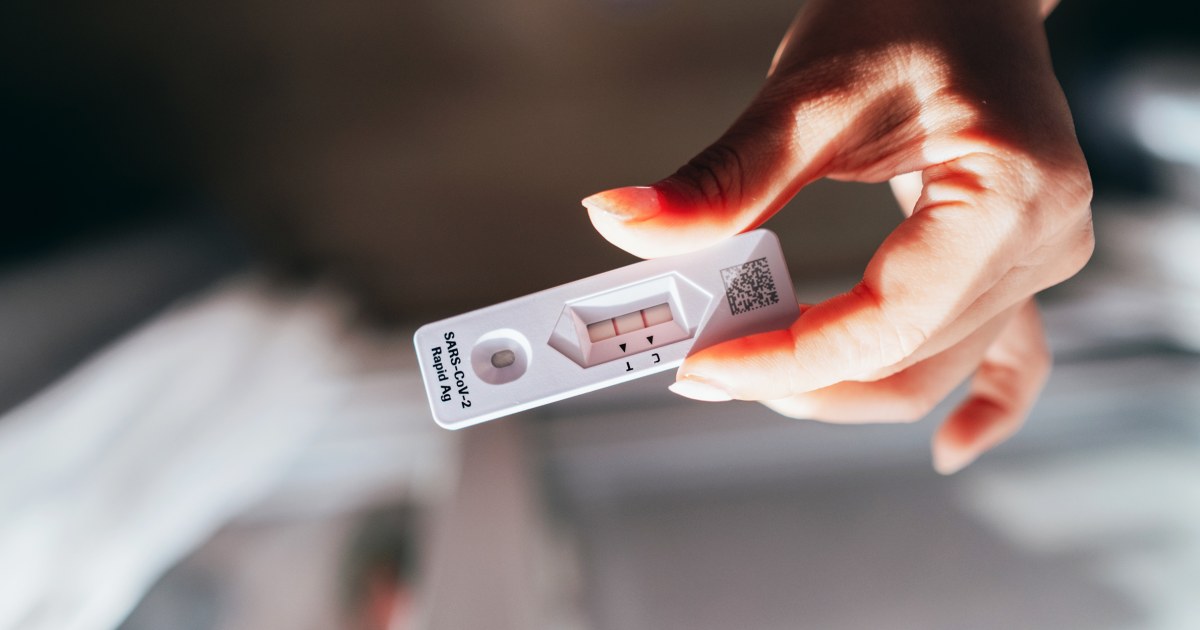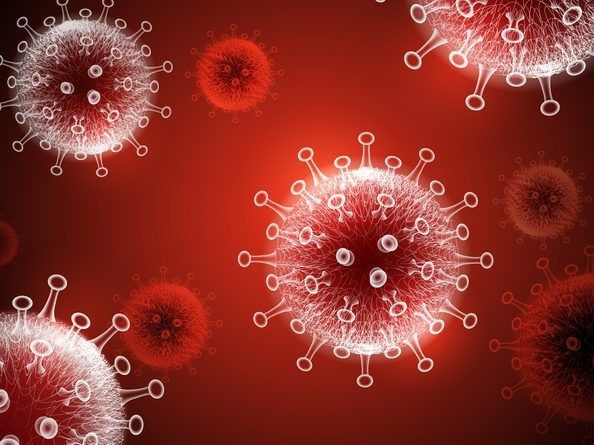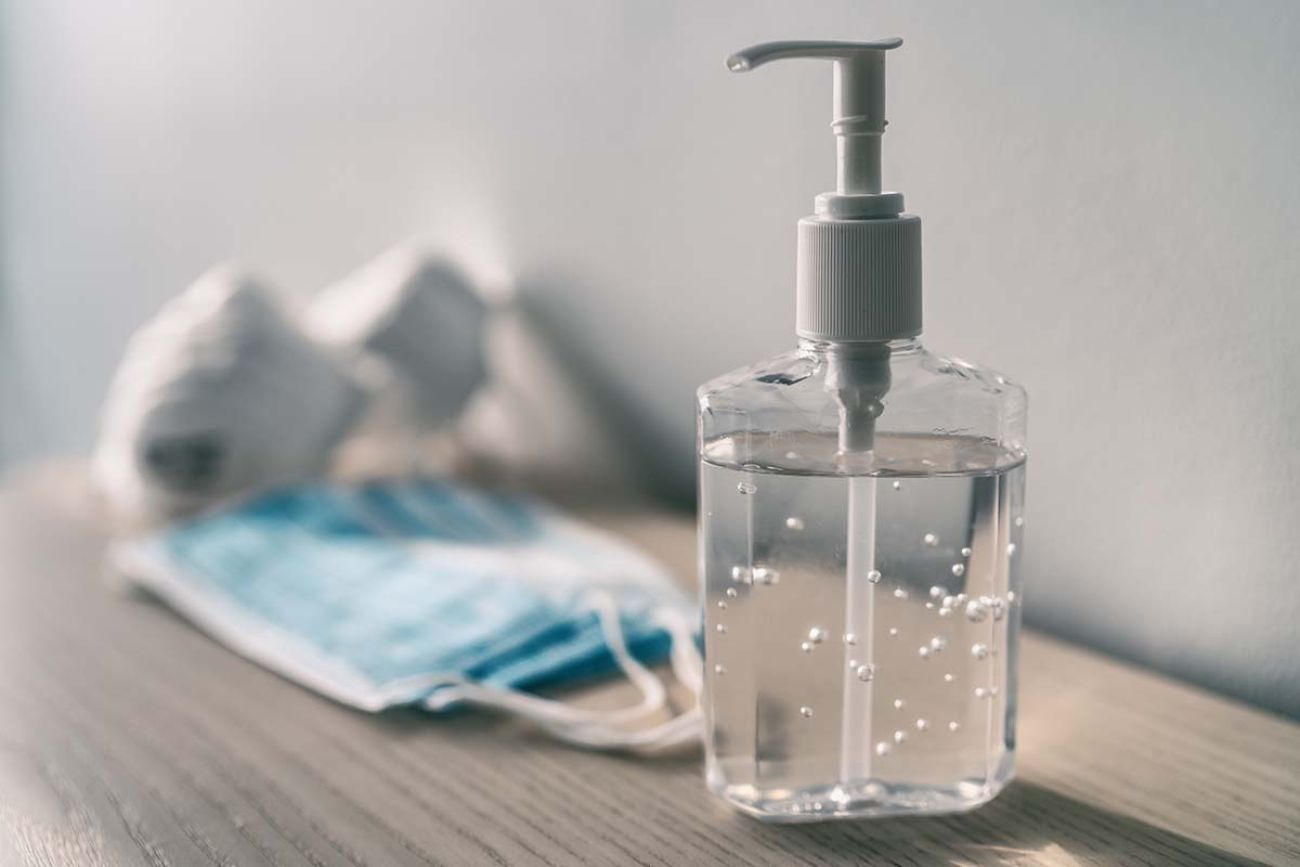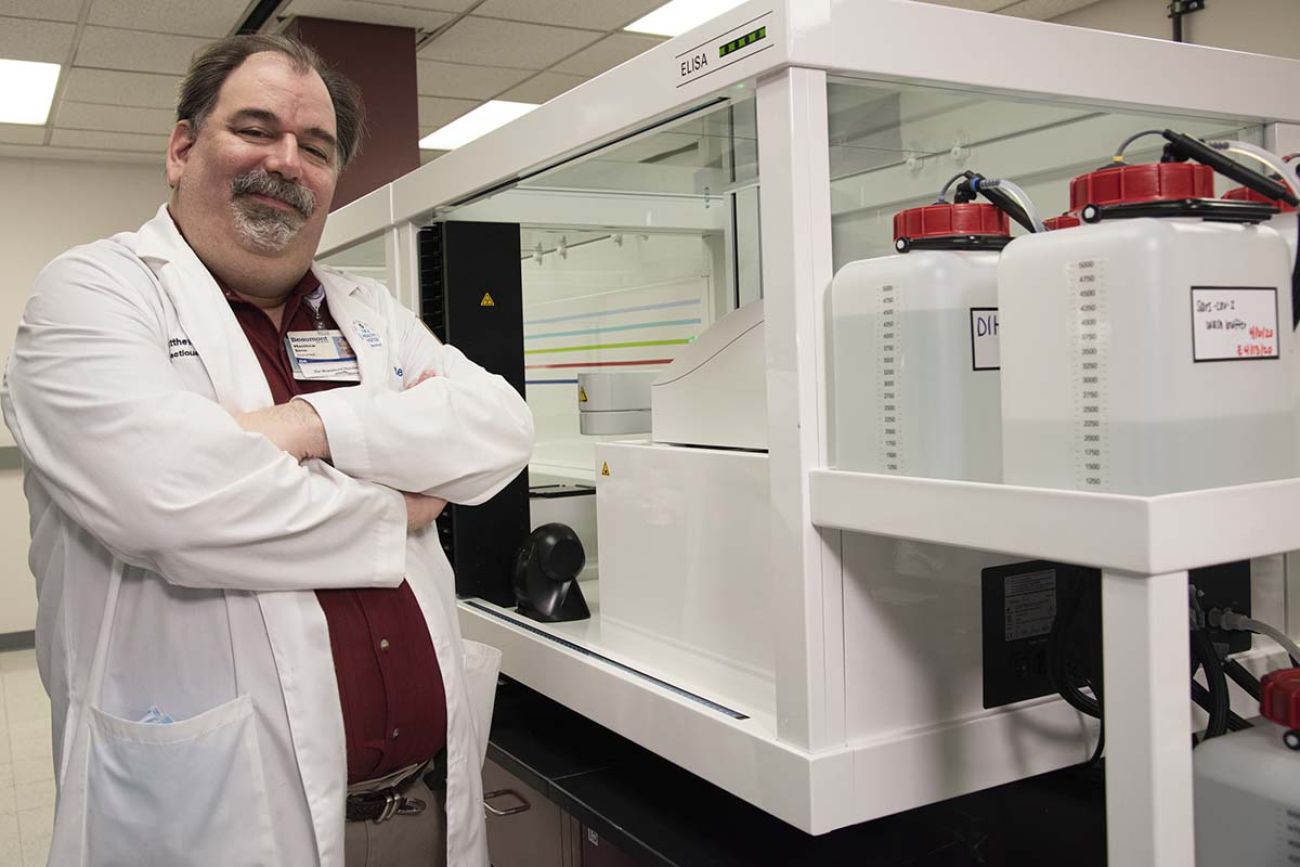Navigation
Install the app
How to install the app on iOS
Follow along with the video below to see how to install our site as a web app on your home screen.
Note: This feature may not be available in some browsers.
More options
Style variation
You are using an out of date browser. It may not display this or other websites correctly.
You should upgrade or use an alternative browser.
You should upgrade or use an alternative browser.
Covid-19 News and Discussions
- Thread starter Yommie
- Start date
Yommie
SpeedLimited
- Oct 2, 2013
- 64,183
- 37,190
- Country of Origin

- Country of Residence

- Thread starter
- #1,387

Covid-19: 2414 new cases, 22 further deaths
There have been 2414 new cases of Covid-19 reported in New Zealand over the week to Sunday, and 22 further deaths attributed to the virus.
Covid-19: 2414 new cases, 22 further deaths
4:23 pm on 22 July 2024Share this
- Share on Twitter
- Share on Facebook
- Share via email
- Share on Reddit
- Share on Linked In

Photo: 123rf.com / Composite Image - RNZ
There have been 2414 new cases of Covid-19 reported in New Zealand over the week to Sunday, and 22 further deaths attributed to the virus.
Of the new cases, 1429 were reinfections.
There were 162 cases in hospital, none of whom were in intensive care.
The greatest number of new cases reported over the past week were in Canterbury, followed by Waitematā and Counties Manukau.
Last week, Te Whatu Ora reported 2640 new cases of Covid-19 over the week, and 30 further deaths attributed to the virus.
Yommie
SpeedLimited
- Oct 2, 2013
- 64,183
- 37,190
- Country of Origin

- Country of Residence

- Thread starter
- #1,391
COVID is still 'out there' warns public health official for Wellington-Dufferin-Guelph
Summer months make it 'a lot harder for COVID to spread,' says public health official
Cameron Mahler · CBC News · Posted: Jul 24, 2024 6:00 AM EDT | Last Updated: July 24

While lab testing is now restricted to those at a higher risk, at-home rapid tests are still available. (Submitted by Vishal Acharya)
Social Sharing
- X
Dr. Matthew Tenenbaum said the good news is that summertime provides a slight reprieve from COVID concerns, knocking case numbers below what might be expected from fall and winter months.
"But certainly not zero," he said. "It's still one of the things out there in the environment."
Tenenbaum said that summer typically sees more people spending time outdoors, which he said makes it "a lot harder for COVID to spread."
Recently, Tenenbaum's agency, as well as Waterloo region public health, temporarily halted their COVID case tracking systems.
The region said changes to the provincial reporting process has caused updates to their Integrated Respiratory Disease Surveillance Dashboard to be paused as of June 1. However, their website said tracking will resume in the fall.
Tenenbaum said the main way his agency kept track of COVID-19 cases was through wastewater surveillance, but funding cuts are causing that program to close at the end of July.
Tenenbaum said they'll still be using other indicators at their disposal.

Dr. Matthew Tenenbaum said that summer months typically see fewer cases of COVID-19, but not zero. (Copyright Trina Koster Photography)
"Things like looking at hospital admissions, looking at numbers of cases among those who go to lab testing, as well as the numbers of outbreaks.
"Those aren't going to be giving us all of the picture, but they're still things we rely upon to get the overall trend of things going up, things coming down, things looking worse, things looking better."
Tenenbaum said despite ever-changing COVID strains, testing has remained steady and accurate, especially lab tests, which he says are now restricted to those with the highest risk.
For those who don't qualify for the high-risk designation, at-home rapid testing is still available.
"The key thing is to use that combined nose-mouth testing technique and to make sure you follow all the instructions in the kit," said Tenenbaum.
Symptoms are practically unchanged, Tenenbaum said "fevers, muscle aches, runny nose, cough, and difficulty breathing are all still staples of COVID-19 infection."
But what's getting harder to tell is whether or not those symptoms are a result of the flu or a common cold. However, Tenenbaum said the recommendations are the same either way:
"Staying home when you're feeling unwell or wearing a mask are just the basic things that are valid anytime of the year," he said.
"If you're feeling unwell, take that seriously."
Yommie
SpeedLimited
- Oct 2, 2013
- 64,183
- 37,190
- Country of Origin

- Country of Residence

- Thread starter
- #1,392

Covid cases are rising: When to rest and when to test, according to CDC and experts
21 states have very high levels of Covid, according to wastewater data.
Covid cases are rising: When to rest and when to test, according to CDC and experts
There are 21 states with very high levels of Covid, according to wastewater data.
With fewer people testing for Covid, experts say it’s more important than ever to pay attention to symptoms.shih-wei / Getty Images file
By Erika Edwards and Akshay Syal, M.D.
Covid rates are still rising across most of the country, fueled by the highly contagious new variants of the virus — KP.2 and KP.3 and LB.1. As of July 18, the highest levels of Covid are in the Western states, although there are no areas of the U.S. where rates are noticeably dropping, according to CDC wastewater data.
At least 21 states have very high levels of Covid, the data shows.
“You have a very, very transmissible variant, probably one of the most transmissible we’ve had,” said Dr. Peter Chin-Hong, a professor of medicine and infectious disease specialist at the University of California, San Francisco. “We have a lot of population immunity, but it doesn’t mean that there isn’t a lot of chaos.”
But people who test positive for Covid don’t need to isolate for five days, according to recent guidance from the Centers for Disease Control and Prevention.
This is the first major wave since the CDC updated its Covid guidance, said Katelyn Jetelina, an epidemiologist who tracks illnesses on her website, Your Local Epidemiologist. She recommends isolating until an at-home Covid test turns negative, which could be anywhere from three to 15 days.
Yet, with fewer people testing for Covid, experts say it’s more important than ever to pay attention to symptoms. Since March, the CDC’s guidance has matched advice for flu and other respiratory illnesses: Stay home when you’re sick, but you can return to work or school once you’re feeling better and you’ve been without fever for 24 hours.
“The guidelines reflect a number of things, including the fact that we generally are overall shedding for less time now,” Bill Hanage, an associate director at the Center for Communicable Disease Dynamics at Harvard University, said. “And there’s more of a link between symptoms” and being contagious.
Because most Americans have already either had a version of the virus or have had several vaccines or boosters — or have had Covid and are also vaccinated — it’s hard to separate Covid symptoms from other respiratory illnesses without testing. Right now, chances are, if you have upper respiratory symptoms — sniffles or congestion — or a cough, it could be Covid.
According to the CDC, someone with Covid can go back to normal activities when symptoms have been getting better for at least 24 hours and no fever even without taking fever-reducing medication like acetaminophen or ibuprofen.
Then for the next five days, take precautions such as wearing a mask in crowded indoor situations.
The majority of viral spread happens when people are the sickest.
“As the days go on, less virus spreads,” CDC Director Dr. Mandy Cohen said in an interview this year.
The CDC guidance is for the general public only, and does not include isolation guidelines in hospital settings, which is generally 10 days.
Covid symptoms
For people who have been through at least one Covid infection, or are up to date with the vaccines, symptoms often resemble a common cold or other respiratory illness.Common Covid symptoms include:
- Runny nose
- Fatigue and muscle aches
- Sore throat
- Cough
- Mild fever
- Nausea or diarrhea
When should I test for Covid? How often?
The original guidance from the CDC was to test approximately five days after exposure because it took that long before the virus became detectable in the body. Now, with high levels of prior exposure, some people could feel symptoms a day or two after exposure, not because the virus is growing more quickly but because the immune system recognizes the virus and responds symptomatically, Michael Mina, an epidemiologist and former professor of immunology and infectious diseases at the Harvard T.H. Chan School of Public Health, said.While many people aren't bothering to test now — tests aren't free anymore — Mina advises taking an at-home test on the third day after symptoms begin. If it's negative, test again the next day.
"If I had only two tests, that's where I'd stop testing," Mina said. "If positive, you don't need more tests. My best educated guess is, assume you're infectious for five days after testing positive."
In a prior study, Mina said that up to 50% of people were still infectious a week or eight days after symptoms begin and up to 20% were still contagious up to nine days later.
While people's immunity is doing a better job than a year ago, Mina believes many people could still be contagious five days after symptoms begin.
The experts recognize that most people will be ready to get back to work or school quickly after they feel better. What's most important is to be careful around people who may be immunocompromised or elderly.
"You don’t want people to be locking themselves in their bedrooms for five days," said Hanage. That said, "there are some contexts where you really would want to be more careful, including giving it to somebody who’s vulnerable for whatever reason."
Yommie
SpeedLimited
- Oct 2, 2013
- 64,183
- 37,190
- Country of Origin

- Country of Residence

- Thread starter
- #1,393

Porcupine Health Unit declares two COVID-19 outbreaks
Virus still moderately present in the community, weekly updates show
Porcupine Health Unit declares two COVID-19 outbreaks
Virus still moderately present in the community, weekly updates showAuthor of the article:
The Daily Press
Published Jul 24, 2024 • 4 minute read
Join the conversation

Article content
There are two active COVID-19 outbreaks in the Porcupine Health Unit as of Wednesday, July 24.Advertisement 2
STORY CONTINUES BELOW
Article content
Celebrities are getting more full-body MRI scans, but should you?
Celebrities are getting more full-body MRI scans, but should you?


The declaration is a reminder that COVID-19 is still present in the community.
The outbreak at the Weeneebayko Area Health Authority in Moose Factory was first declared July 20 and the outbreak at the Golden Manor Home for the Aged was first declared July 5.
COVID-19 positivity in the province is currently moderate at 11.2%, according to the most recent data. There were 67 outbreaks reported across the province between July 7 and 13 and seven deaths.
“If you exhibit symptoms such as fever, runny nose, cough, or any gastrointestinal issues, please refrain from visiting patients in the hospital,” said Jodie Russell, manager of infection control at the Timmins and District Hospital, following an outbreak in there on May 29.
Sudbury Star Morning Briefing
Start your days with the latest local news, weather, sports, community updates and more.
Sign Up
By signing up you consent to receive the above newsletter from Postmedia Network Inc.
Article content
Advertisement 3
STORY CONTINUES BELOW
Article content
“While masks aren’t mandatory for hospital visits, they’re available at all entrances for those who prefer to wear them.”
Two or more patients must have positive COVID-19 test results within a 7-day period for an outbreak to be declared, under the current Ministry of Health definition.
The Porcupine Health Unit (PHU) discloses the names of settings where an outbreak has been declared online if the outbreak poses a risk to the public. The list can be seen by visiting https://www.porcupinehu.on.ca/en/ selecting the ‘COVID-19 and Influenza’ page under the ‘Your Health’ tab, and selecting ‘outbreaks’ under the ‘In This Section’ box.
The chart is updated every Wednesday.
In the interest of privacy and confidentiality of small highest-risk settings, the name of the facility will be listed as ‘undisclosed’ if it has been determined the outbreak does not pose a risk to the public.
Advertisement 4
STORY CONTINUES BELOW
Article content
It is the congregate living facility’s responsibility to notify families, visitors, and staff when an outbreak is declared, according to the Ministry of Health.
A congregate living facility refers to a range of establishments were mostly unrelated people live or stay overnight, and include retirement homes, group homes, correctional facilities, shelters, residences for children or youth, and summer camps.
The PHU declares the outbreak and manages it by providing guidance as well as by putting control measures in place to help reduce the number of cases that could occur.
Outbreaks in acute care settings such as hospitals and congregate living settings such as retirement homes, long-term care homes and group homes can affect vulnerable populations and can pose a significant risk to residents, even if it’s only for a limited time.
Advertisement 5
STORY CONTINUES BELOW
Article content
Symptoms of COVID-19 and its variants range from mild to severe. A person can assume they are contagious with the virus if they have any one or more of: fever or chills, cough, shortness of breath and decreased loss of taste or smell and any two or more of: runny nose or nasal congestion, headache, extreme fatigue, sore throat, muscle aches or joint pain and gastrointestinal symptoms.
If such symptoms are present, Public Health Ontario’s advice is to stay home and talk with a primary care provider or doctor if necessary.
Visitors should not visit anyone in these facilities if they are ill, and are asked by the PHU to stay home until symptoms have resolved.
The PHU asks those visiting an acute care setting or congregate living setting to adhere to its precautions, keep their vaccinations up-to-date, and wear the appropriate personal protective equipment when required.
Advertisement 6
STORY CONTINUES BELOW
Article content
COVID-19 is an illness caused by the SARS-CoV-2 virus. It was first identified in late 2019 and declared a global pandemic by the World Health Organization on March 11, 2020.
In some cases, the virus can cause ongoing health problems, called post COVID-19 syndrome. According to the Mayo Clinic, the most common symptoms include fatigue, fever, coughing and shortness of breath, and can be experienced by those who contracted both severe and mild forms of the disease.
The Porcupine Health Unit was unable to provide a total tally of deaths from COVID-19 in their area (the Cochrane District and the town of Hornepayne) since the start of the outbreak in Ontario on January 25, 2020.
According to their 2020 and 2021 Annual Reports, however, there were 130 cases of COVID-19 in 2020, of which 9 died, and 3,022 cases in 2021, of which 22 died.
Advertisement 7
STORY CONTINUES BELOW
Article content
The age range of those who died in 2021 was between 47 and 96 years, with an average age of 76.9 years. This is slightly older than the 2020 average age of 72.0 years.
Laboratory-confirmed weekly case counts and rates of COVID-19 are no longer being updated on the Ontario Respiratory Virus Tool.
According to the most recent data up to June 1, 2024, cases in the PHU had fallen from a peak of under 74 for the week of November 19, 2023 (out of a population of 83,937), to 11 cases for the week of May 26, 2024 (out of a population of 83,681).
The Porcupine Health Unit in Timmins has COVID-19 self-testing rapid antigen test kits available for pick up. Self-isolation until symptoms are improving for at least 24 hours is recommended in the event of a positive result.
COVID-19 vaccination is not currently available, but will resume in the fall. For more information, call the Porcupine Health Unit at 705–267–1181.
Yommie
SpeedLimited
- Oct 2, 2013
- 64,183
- 37,190
- Country of Origin

- Country of Residence

- Thread starter
- #1,394

COVID is up again in Michigan. Good luck finding more info (or free tests) | Bridge Michigan
COVID appears on a steady increase again, but health officials stopped collecting data as it grew increasingly imprecise.
COVID is up again in Michigan. Good luck finding more info (or free tests)

Self-isolation and quarantine protocols of early COVID are long gone, but simple steps can help curb the spread as cases increase in Michigan. (Shutterstock)
July 22, 2024
Robin Erb (Email) & Mike Wilkinson (Email)
Michigan Health Watch
Coronavirus Michigan
SHARE THIS:
Share this article on Twitter
Share this article on Facebook
Share this article on LinkedIn
Share this article via email
Print this article

Michigan Health Watch
COVID is up again in Michigan. Good luck finding more info (or free tests)
SHARE THIS:
Share this article on Twitter
Share this article on Facebook
Share this article on LinkedIn
Share this article via email
Print this article
Donate
- COVID cases have doubled in the past month in Michigan
- The disease behaves like a common cold for most, but older adults and those with compromised immune systems are at higher risk
- Free tests are hard to find and some are debating whether testing at all is necessary
Dr. Matthew Sims knows COVID is sickening folks in southeast Michigan at a greater rate these days.
Four of his medical colleagues in the past few weeks have been infected with COVID in the past weeks. The infectious disease doctor saw three patients on his last rounds at Corewell Health’s Royal Oak hospital earlier this month, too: an “incidental” case of a patient getting surgery who also happened to be COVID-positive, and two others who were ill from COVID.
National cases are increasing as well, as evidenced by President Joe Biden’s infection last week.
Beyond those generalities, though, it’s hard to get a better understanding of the virus’ spread and severity because Michigan in May stopped keeping data on COVID hospitalizations. (Editor’s note: The decision prompted Bridge Michigan to end its weekly COVID Tracker)
Likewise, state case counts are far less precise because they only include infections confirmed by labs. Most people test at home.
Officially, then, reported cases doubled to 1,925 on July eight from four weeks earlier. That’s higher than this time last year, but a fraction of even the winter. Deaths remain at very low levels.
With the exception of older and more sickly Michiganders who are more susceptible to greater damage from COVID, we’ve “pretty much gotten to the point where it’s just part of our normal lives,” Sims said.
And with a growing immunity to its most serious complications, “there are a lot of people who are getting COVID but don't know it. It’s just a common cold to them,” he said.
What do we know about COVID cases now?
The number of reported weekly cases has risen for each of the past seven weeks and triple the number reported in late May.Nationally, the virus is being detected at wastewater sites at higher levels, with the west and south hit the hardest. But sites monitored across Michigan, so far, have noted “moderate” levels of the virus.
Isn’t it just a cold? (No.)
As more people have multiple contacts with the virus or the vaccine that prevents its most serious complications, a COVID infection becomes more of a nuisance for most healthy people — a stuffy nose, for example.Several staff at Michigan’s District Health Department #10, which serves ten northwest Michigan counties, recently tested positive for COVID, said its health officer, Kevin Hughes.
He said he’s heard recently about more cases in the community, too.
Related:
- CDC drops most COVID-19 isolation guidelines. What it means in Michigan
- Bridge Michigan launches Elections Tracker, ends COVID Tracker
Older Michiganders and those with compromised immune systems and serious chronic conditions are still very much at risk, Sims said.
While those 70 or older comprise nearly 68% of all Michigan COVID-19 deaths since 2023, they make up 72% of the 1,284 reported COVID-19 deaths in 2024.
Those who are 80 or older make up 48% of the 2024 deaths, up from 42% from 2020-2023.
Should I test if I’m sick?
It depends, Sims said, and the hard-and-fast rules of early COVID are long gone.Sims recommends testing if you have a fever or difficulty breathing. Knowing you’re COVID-positive can help you stop its spread if you mask and stay away from older people and those with health problems that can make them vulnerable to the virus’ most severe complications.

Four of his colleagues have recently been infected with COVID, said infectious disease expert Dr. Matthew Sims.
Health experts say treatments against COVID infections work only when started within five to seven days of an infection. (An online tool here can help you learn about treatments and find them if you don’t have a regular doctor.)
But Sims also has seasonal allergies.
“If I tested every time I was stuffy, I’d be testing three or four times a week,” he said.
And if you’re a remote worker and very mildly, and you don’t have a lot of contact with people, it might not be necessary to test, especially as free tests are more difficult to find.
Where do I find tests?
The test sites and free tests in the early years of the pandemic are now fewer and farther between, and the state’s COVID hotline was closed June 30, according to a recording.With the end of the public health emergency, insurers no longer are required to cover the costs of at-home tests. The federal program to ship free at-home tests to mailboxes also has ended.
SPONSOR
Still, the Michigan Department of Health and Human Services on Monday was updating its COVID testing webpage to reflect a shift in dozens of former test sites into 22 Neighborhood Wellness Centers, which provide other basic health screenings in addition to COVID tests.
The state health department also continues to provide free at-home tests through a partnership with local libraries.
Through a federal program, Michiganders without insurance may still receive testing at sites throughout the state. A searchable, online tool is here.
If I test positive?
The long quarantine and isolation periods of early COVID are long gone, but there are still precautions.“The fact is it hasn’t really changed. There aren’t a lot of restrictions,” said Susan Ringler-Cerniglia, spokesperson for the Washtenaw County Health Department, where its limited data is showing a slight increase in cases.
The goal: try your best not to spread it, she said.
Those who are COVID-positive no longer need to skip school or work if they are fever-free for 24 hours and feeling better, according to guidelines the U.S. Centers for Disease Control and Prevention updated in March.
That aligned the recommendations to guidelines for other respiratory infections, such as flu or respiratory syncytial virus (RSV).
SPONSOR
In short: Resume normal activities when — for at least 24 hours — your symptoms are better overall and you are fever-free without medicine.
At District Health Department #10, employees were asked to stay home until they were fever-free — without fever-reducing medications — for at least 24 hours, Hughes said.
When they returned to work, they were to wear a mask for five days, he said.
That follows CDC’s recommendations.
The agency suggests taking steps for cleaner air, stepping up hand hygiene, wearing masks, paying attention to physical distancing, and/or testing when you will be around other people indoors.
Users who are viewing this thread
Total: 1 (members: 0, guests: 1)
Country Watch Latest
-
-
Why India Deliberately kept Weakened Bangladesh’s Military | InShort (5 Viewers)
- Latest: Vikramaditya1
-
-
Latest Posts
-
-
-
China's Youth Unemployment Soars to Record 18.8% as Graduates Flood Job Market (10 Viewers)
- Latest: GatlingGun
-
